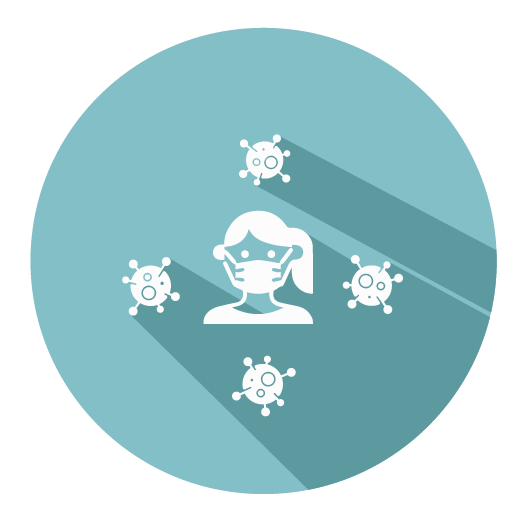An unexpected way how COVID-19 may increase your sales
Relevant topics Archive, Strategy
A lot has been said and written about the current COVID-19 pandemic and we’ve learned much from it. In the past year, great advances have been made in fields such as healthcare, hygiene, viral transmission and governmental responses to crises. Keep reading to find out the lessons we learned which can turn out to be a great advantage for governmental institutions and businesses in all sectors!
The current pandemic has also inspired many scholars to research subjects that are relevant for the COVID-19 pandemic. The field of neuromarketing is no exception. In the summer of 2020, an interesting new paper by Yunhui Huang and Jaideep Sengupta was published in the Journal of Consumer Research. These two scholars researched the impact of disease-related cues on product preference. What they found was that people prefer more unusual product options instead of common and prevalent options when they come across disease cues.
Disease-cues can have a unique effect
To illustrate these findings, allow me to use an example involving ice cream. Let’s say a particular ice cream stand sells only two flavors: a plain vanilla flavor and an unusual dark cherry chocolate flavor. According to this research, people who are primed with disease-related cues might favor the unusual dark cherry chocolate ice cream over the plain vanilla one.
In six studies, the researchers found a consistent preference for non-typical products when test-subjects were induced with disease-related cues. In each of the studies, test subjects were made to read an article or watch a slideshow about either a disease-related subject or something else.
After finishing this task, participants were asked to choose products from one or more pairs of products, with the products in those pairs being either typical or atypical. In all experiments, participants who were presented with the disease-related content were much more likely to choose atypical product options.
These experiments indicate the existence of a correlation between exposure to disease-cues and preference for atypical product options. Or in simple words, preference for irregular product options increases when people are confronted with disease related stimuli.
Immune system on steroids
The researchers attributed this preference shift to our behavioral immune system. This psychological system causes people to avoid stimuli that they associate with diseases. This doesn’t necessarily mean that those stimuli are actually infected. Whether or not something is perceived as a disease-related threat is not based on a rational evaluation. Instead, the behavioral immune system focuses on stimuli that are in one way or another associated with higher risks of infection, either directly or indirectly. The verdict of a stimulus being a disease-related threat might therefore be completely irrational and solely based on unconscious processes.
The context used in the research of regular versus irregular product options is in itself a good example of how this works. Regular product options are regular because they are being used by a lot of people. More people equals more risk of infection and therefore people will associate regular options with more risk of infection. This is not based on a rational evaluation, as the presence of more people doesn’t necessarily mean that those people are actually infected. It does however shift product preference towards more unusual product options.
Increasing preference for unique options
These findings can be used to promote atypical options, or options marketed as such. If your marketing strategy revolves around your product or brand being unique, then you’re in luck. You might want to increase your marketing efforts to increase people’s preference towards your unique product or brand, thereby increasing your chance of a sale. Even if your product or brand is typical of its kind, you can still use these findings to swing people’s preference your way. Right now, an ideal trigger of this could be a rise of COVID-infections and the media attention that usually follows shortly after. If this happens, promote your brand and its unique characteristics. Alternatively, you could introduce product variations that are irregular and atypical.
Of course, you could also expose people to disease-related cues yourself. Don’t worry, I’m not saying you’ll need to infect your customers with some exotic disease. As we’ve seen, the behavioral immune system causes people to avoid stimuli that are unconsciously associated with infection-risk, not just things that actually are infected. You could therefore expose people to cues that they subconsciously associate with diseases, such as soap dispensers, face masks or signs pointing out various COVID-related rules. People have learned to associate these objects with diseases. Placing them close to the cash register could therefore increase preference for unique options.
Marketing after the COVID-pandemic
Of course these findings don’t just work with COVID-19. In their experiments, the researchers focused on diseases in general, not just COVID-19. However, the current COVID-pandemic and the media attention that comes with it may have created an opportunity for struggling companies to turn the odds in their favor.
Of course this pandemic will end someday. But once it does, another disease might one day take its place. Also, this pandemic has caused media attention for diseases and their prevention to skyrocket. After our experience with COVID-19, nobody would want another outbreak with similar consequences. Therefore, attention for diseases and their prevention might persist long after this pandemic. That would cause an increase in the number of perceived disease related stimuli that people come across, giving you more chances to profit.
Key takeaways
- In times when people are being exposed to a lot of disease-related cues, marketing your product or brand as unique might increase people’s preference for it.
- You can also increase people’s preference towards unique products or brands by exposing them to disease-related cues yourself.

